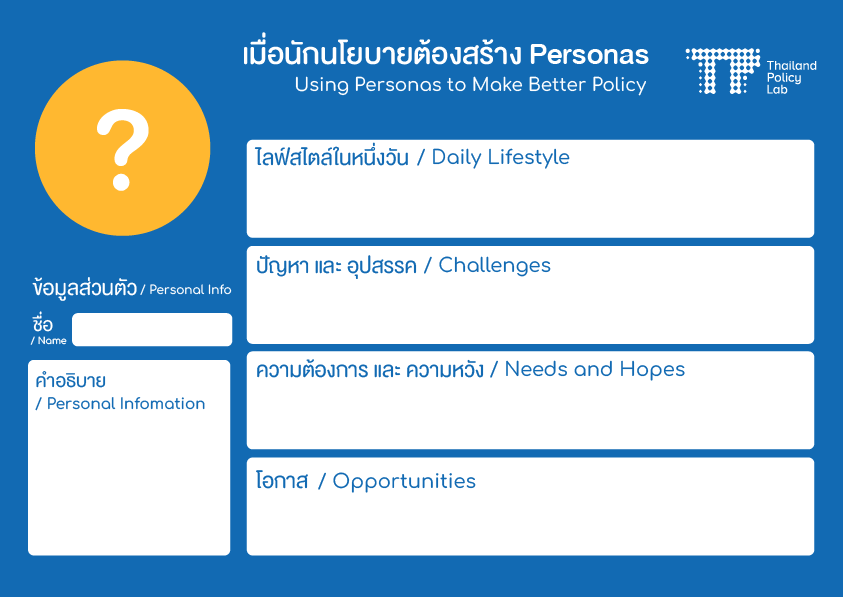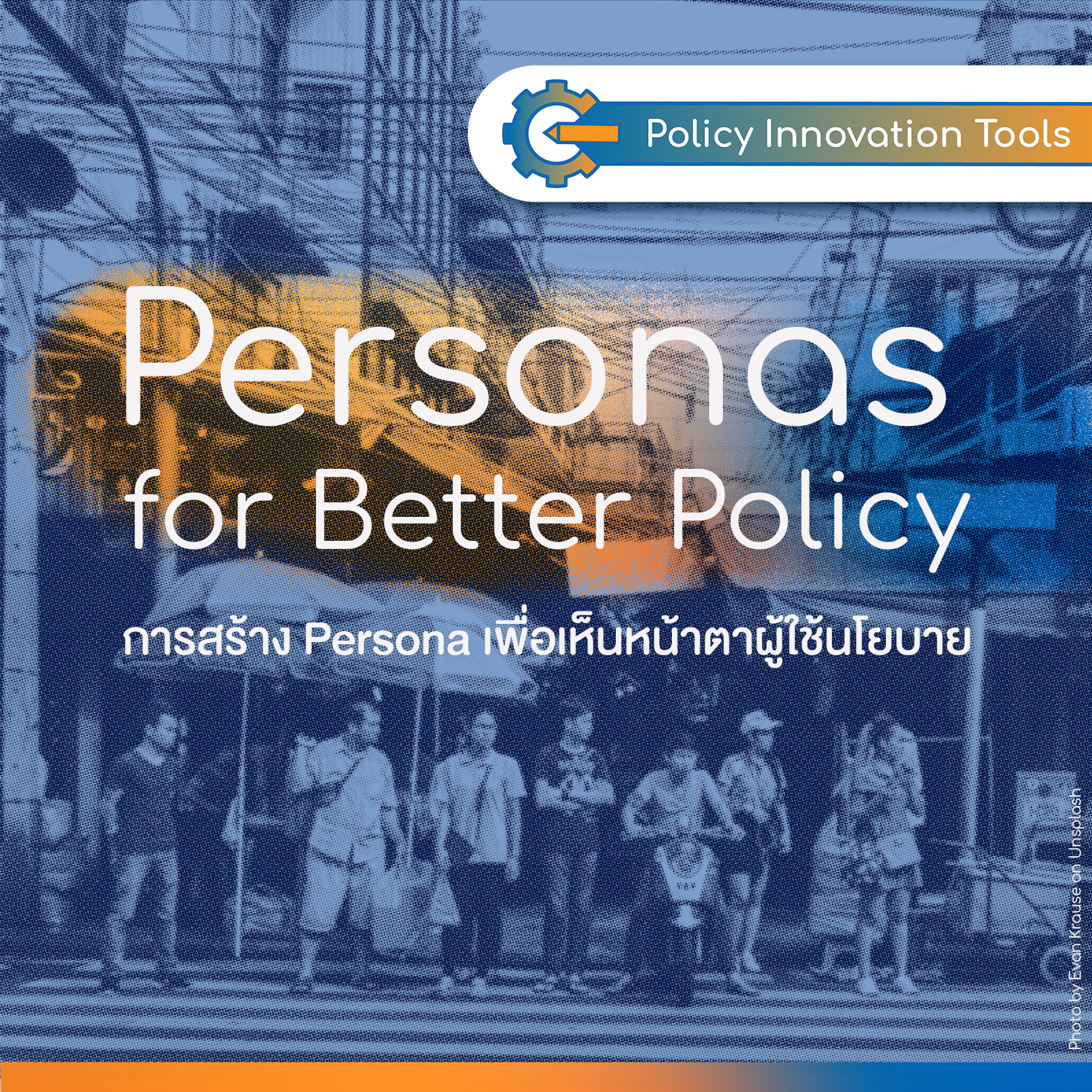Those in the business sector are familiar with using ‘user personas’ to identify target customers and to design products or strategize brand marketing. Creating personas has helped brands provide better products and better experiences, and so will it help the public sector to provide better policies and services to the citizens. By utilizing ‘user personas,’ a policy is comparable to a marketing plan, and an efficient service to a good product where personas are the specific groups of citizens who will be provided with services. Creating personas has become a valuable tool for policy design that should not be taken for granted if one would like to gain better understanding of the people who will be impacted by the policy so as to leave no one behind.
A guide to creating personas is not rigid, it is flexible depending on one’s objective, still, there are certain guidelines to follow as you can see below:
Personal Info
Name the persona based on reality and describe the persona’s life context such as age, education, location, socio-economic status or other details that are essential to your policy design.
Daily Lifestyle
To understand the persona’s daily life, imagine their lifestyle in a day. At what time do they wake up? How do they commute to work? What kind of meal do they have? Where is their home or even do they have home? To name but a few.
Challenges
Regarding a policy issue you are designing, what kind of challenges in life does this persona have? The examples of questions are: Do they have access to technology Does their status as a religious minority affect them? Do they have too little free time? Do they face difficulty traveling to work?
Needs and Hopes
What are this persona’s needs and hopes related to the policy you are designing? The examples of questions are: Do they need better education in the rural area? Do they need accessible health care? Or do they hope that their newborn will be automatically granted Thai nationality?
Opportunities
In the policy area you are tackling, what are the opportunities or the policy gaps you can address to improve policy effectiveness? For instance, increased political awareness in the northeastern region or public space development in Chiang Mai could help lessen the gaps of your policy depending on your policy objectives.
Creating personas in a policy design should involve and prioritize the vulnerable groups, taking into consideration that these are the people who have challenges in accessing public services, and a policy should always be designed for every person. Take this case for example: B is a motorcycle taxi rider in Bangkok. He lives with his wife and children in the informal settlement where he pays monthly rent. If the area where he lives is gentrified, he may have to move to live further from where he works or he may not even be able to keep his old job. B wishes that the authorities will help him find a new place to stay or help him learn new skills so that he can do a new job that pays no less than his recent job. He is also concerned about his children’s education in case his children have to transfer to another school and he has to pay higher tuition.
Creating persona can also help policymakers see a clearer picture of each group of citizens (which, of course, is not fixed and depends on the variables and social contexts.) For instance, Sofia lives in the Deep South. She is not affected by poverty, but by being a muslim, she is affected by Thailand’s university entrance exams that require every student to take a test about Buddhism. This is what Sofia wants to change.
To design better experiences with public services, policymakers can create ‘personas’ to make better policies.
You can save this persona template for policy design.


